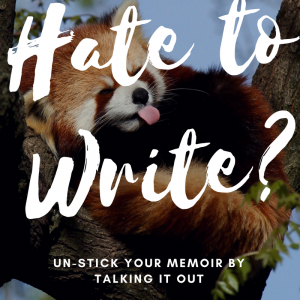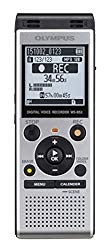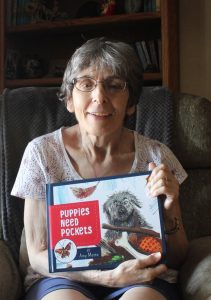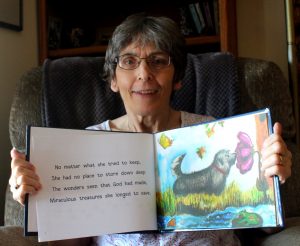 This answers the third Un-Stick Your Memoir question — How to organize your project, from a couple weeks ago. Figuring out how your brain works best with storytelling will save you much wheel spinning frustration later. Trust me on this!
This answers the third Un-Stick Your Memoir question — How to organize your project, from a couple weeks ago. Figuring out how your brain works best with storytelling will save you much wheel spinning frustration later. Trust me on this!
3 Ways to Get it Done:
Chronological—the most popular and for most folks often the easiest way to get started. However, don’t get stuck on this. Start with a key event and build forward and back around it.
Theme— Think about the kinds of stories you like to read or hear, this may help you choose a theme that naturally resonates with you. What you’ve learned in life? Adventures? People who have impacted you? Your faith? Your family?
Timeline—What is a pivotal event in your life? Get a piece of paper, put that event at the top of an “arc” you draw on the page. Then, jot down ideas and experiences about what came before and led up to this. And after, what happened next in the trajectory of your life? Ask yourself:
“Would you be where you are now if that event had happened differently?” these make for good reading and are probably already a part of the way you relate your story.
A word about outlines:
Of course some of you just love outlines—by all means knock yourselves out and outline to your heart’s content! If this is how your brain likes to organize then work with it. If, however, you are a “fly by the seat of your pants” type of person, toss the idea of an outline away, wipe the cold sweat off your brow and work with the method that comes naturally to you.

I believe that even the most dis-organized person has developed ways to organize their life. They cope and compensate, tapping into what works well for them.
Work with your natural bent
and it will keep you from fighting the frustration of trying to adapt
to a method that is foreign to your way of thinking.
Now, here are three ways to approach the nuts and bolts of gathering the pieces of your story. Whether you’re using the oral recording method (click to see last week’s blog) or writing, these will work. I’ll discuss the written method here as I am a visual and tactile learner and need to see my project and touch it. If you thrive on oral, then adapt these methods to the recorder, talking out your story. You can use the containers/folders for storing your photos and memorabilia prompts.
As Kermit says, “What are our choices?” :
Use a large binder and some pocket folders
Set up a file and folders on your computer
Use manila folders or boxes
I’ve personally used all 3 of these methods and they all work. Label whichever version you’ve chosen with general titles. You’ll be surprised how many will later become chapter titles as you think of descriptive phrases or pivotal events for each section.
The key is that when ideas come to you, or you find mementos and photos that go with each piece of your story, you will put them in the folder, box or file they belong in. Countless great writers have grabbed whatever was at hand at the moment and written snippets of a story, or a song lyric or a rough poem idea. Napkins, the back of your hand (a bit hard to file, but you’ll figure it out), a scrap of newspaper.
I do preach always having a pen/pencil
and a notebook with you though—
expecting ideas somehow breeds ideas.
Spend some time letting your thoughts mull and simmer in your conscious as well as your subconscious, and tuck the idea pieces in their “home” like stray puppies as they come to you. Give yourself a limited time as that will encourage you to focus. Say, 2 weeks.
Ideas will flow if you give your brain
a task and a time frame.
At first it might seem nothing is coming to you, but wait for it! Once having given your brain its main job, you will come up with ideas— in the shower, walking the dog, mowing the grass, tucking your little one into bed or hearing your mom or dad tell that same story ( I know you love it) again. Relax, it will happen!
Pull everything together at the end of that time and start filling out the gaps. Pick a section, folder, box and focus just on that till you have everything down that you can remember pertaining to that topic or time. This is just brain dump time. No editing yet!
If you’ve made it this far and are still stuck, give me a call and let me help you get back on track and moving forward. I’d love to hear what steps you’ve taken and what is working for you.
Karen
 “I hate to write, how can I do this?” As I mentioned last week, this is a sticking point for some folks. They’re great oral storytellers but the thought of writing those stories and memories down gives them “test anxiety” at the least and “the screaming mimi’s” at the worst. Never fear-there are a few different ways to handle this, don’t let it stop you!
“I hate to write, how can I do this?” As I mentioned last week, this is a sticking point for some folks. They’re great oral storytellers but the thought of writing those stories and memories down gives them “test anxiety” at the least and “the screaming mimi’s” at the worst. Never fear-there are a few different ways to handle this, don’t let it stop you!
 What’s Got You Stuck? Here are three challenges I hear most often at workshops and coaching consultations.
What’s Got You Stuck? Here are three challenges I hear most often at workshops and coaching consultations. Helping people shift from dreaming and talking about a project they’ve longed to do to holding a finished book gives me more joy than you could possibly know. That’s why I do what I do. Because I love watching my clients achieve the satisfaction of seeing their goals become reality.
Helping people shift from dreaming and talking about a project they’ve longed to do to holding a finished book gives me more joy than you could possibly know. That’s why I do what I do. Because I love watching my clients achieve the satisfaction of seeing their goals become reality.